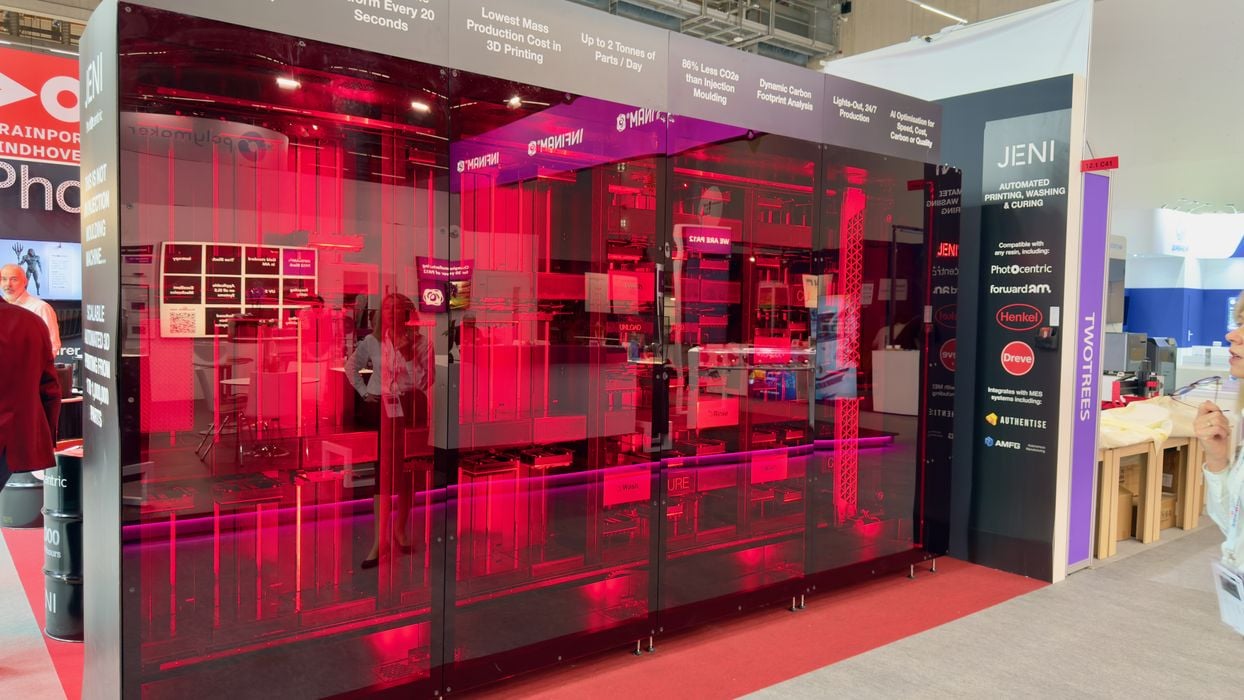
I’ve been thinking about the implications of Photocentric’s JENI system, and they could be big.
Photocentric showed us their JENI automated 3D printing system the other week. This is a modular system that integrates resin 3D printers, wash stations, curing stations, and robotic automation.
JENI accepts print jobs, dispatches them to available printers, washes completed prints, cures washed prints, and removes print plates with finalized parts.
That’s been done before, but here there are some major differences:
- JENI can print up to two tonnes of material per day (!)
- JENI is said to meet or exceed injection molding throughput rates.
- JENI parts cost the same or less than injection molded parts.
This upsets the manufacturing equation. What’s that? It’s the calculation of the decision point for using 3D printing or using traditional injection molding for mass production.
Mass production involves first spending a considerable amount of money to create a mold (or molds if complex geometry). Once the mold is created, it can be repeatedly used to cast objects rapidly. The expensive cost of the mold is then distributed across all the cast units made. If a lot of units are made, then the cost per part is quite small.
Meanwhile, if you’re using 3D printing to make parts, the cost is the same for each part no matter how many you make.
The equation calculates the break-even point for a given part, above which it is cheaper to use injection molding, and below which it is more economical to just 3D print them.
For years, the typical cut-over point would be tens or a few hundred parts. This relegated 3D printing to only low-volume situations.
But this may have changed with JENI. If it operates as claimed, then the “line” has dramatically moved up — and maybe there isn’t even a line at all anymore.
This development could change manufacturing in a significant way, once manufacturers catch on to this potential opportunity.
There’s one catch: JENI, as a resin 3D printing system, has a limited set of materials. In the future, it could be that the decision becomes more about materials than the volume of parts required.
Via Photocentric
